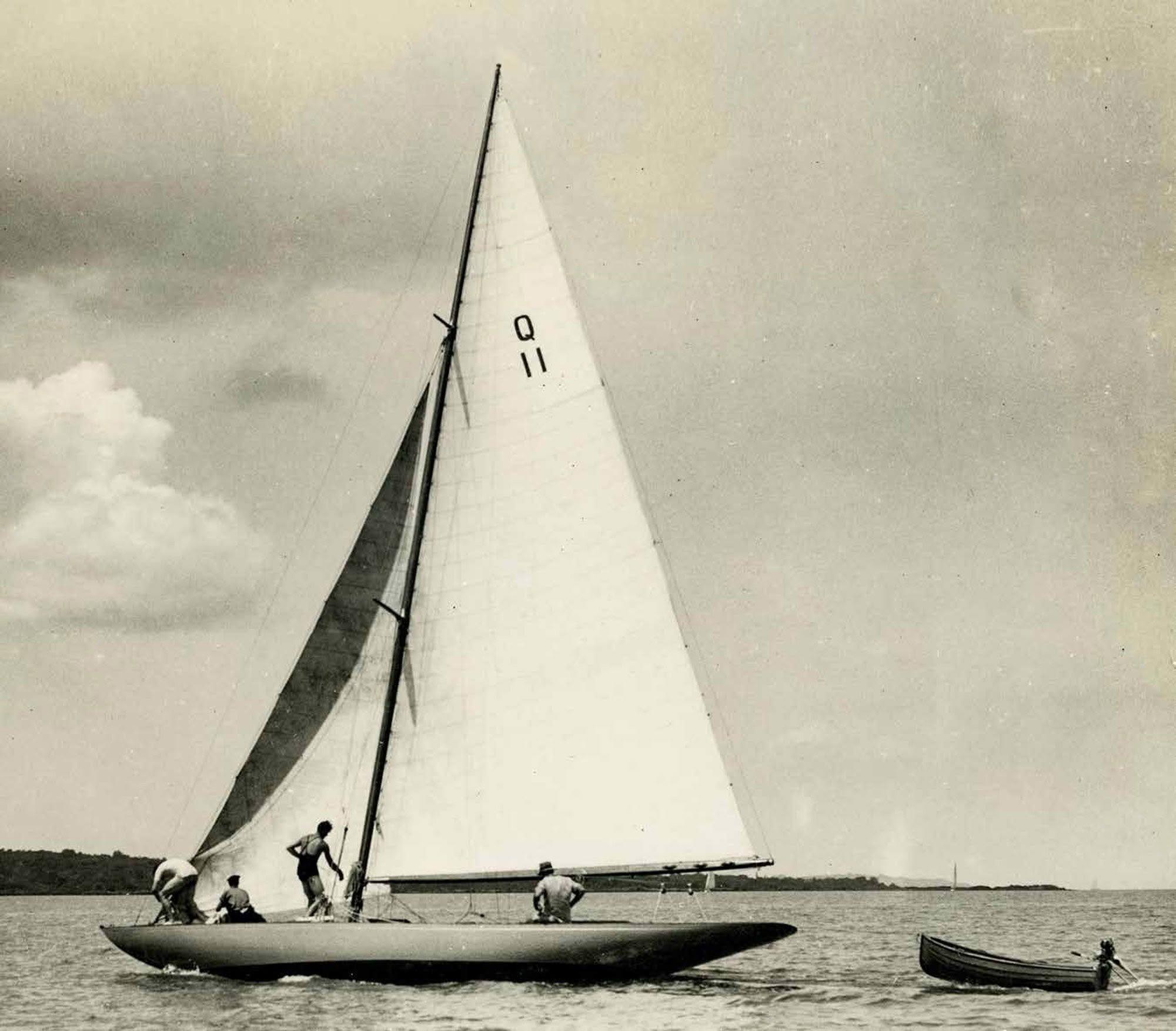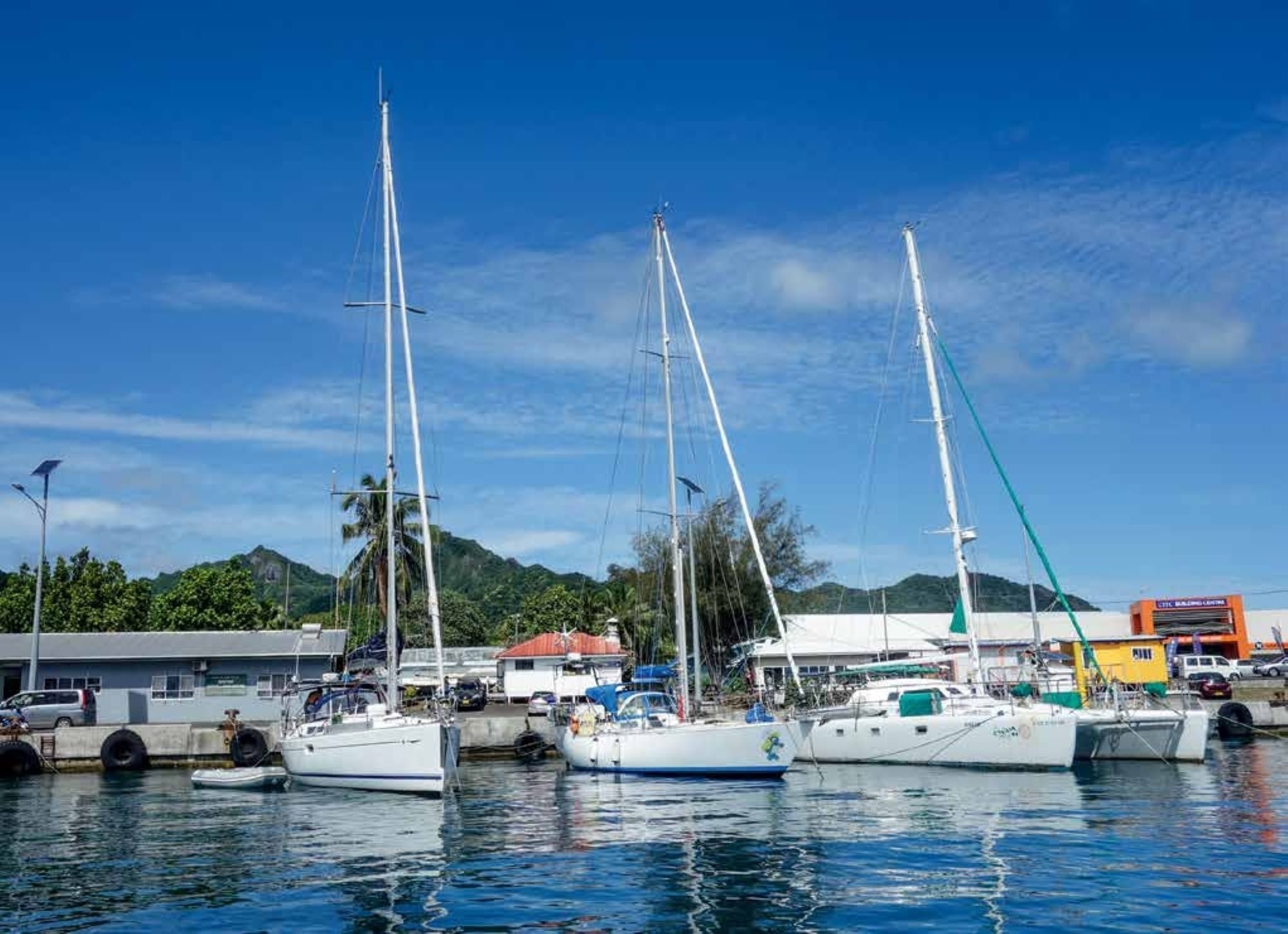

In the February issue I left Lt. Home Kidson arriving back in England in late 1935 to marry the lovely Lady Georgianna Curzon.
Kidston, a dashing young naval officer of unlimited means on HMS Diomede, had cut a large swathe through the sport flying, motor-racing and yachting scenes in New Zealand during a couple of heady years.
Before he left, Kidston sold his English-built sixmetre yacht Altair to the Tattersfield brothers. They had spent the last of the 1935 season chasing Altair in their keel yacht Janet. Who were these brothers and what other boats did they own?
Their father, James Walker Tattersfield was born in Batley, Yorkshire in 1877 to a family with deep connections to the wool trade. In August 1899, at the age of 22, he emigrated to New Zealand and set up a drapery importing business in Auckland.

James soon established Tattersfield Ltd, a very successful business manufacturing wire-wove mattresses, bedding and rugs with a factory in Grey Lynn, later in Richmond Road, and a retail outlet on the corner of Pitt Street and Karangahape Road from 1904. In those days the entire city was served efficiently by the network of electric tramways.
He married Evelyn Abbott in 1904. The couple had six sons, all of whom became yachtsmen. Frederick Guy (‘Guy’) was born in 1906, followed by James Noel (‘Noel’) in 1908, Leonard Walker (‘Leo’) in 1910, Peter Abbott in 1912, Felix Maxwell in 1914 and John Watson in 1916.
James Tattersfield’s younger brother Clifford emigrated some years after him and set up a business in Gisborne as a dyer and dry cleaner but soon followed James’ footsteps into the manufacture of bedding.

James’ boys were exposed to yachting very early. The family lived in Anglesea Street, Freeman’s Bay, then Richmond Road but moved to a large home in Allendale Road Mt. Albert in 1914. James also built a holiday home in French Bay on the Manukau where the boys could run wild, which they tended to do frequently at Mt Albert too, when left in charge of a housekeeper while their parents were away on overseas business trips.
After leaving school at 16, Guy decided that farming and wool were his calling. He went to his uncle Clifford in Gisborne and worked as a shepherd in Poverty Bay and South Auckland for four years until returning to Auckland in late 1925. He had a trip to England with his parents in early 1926 and went into the family business on their return. Noel became a law clerk, working towards his qualification as a solicitor.
Both were good rugby players, Guy with Ponsonby and Noel with Varsity, while Felix later played for Grafton. In those days, in Auckland’s maritime suburbs, rugby and yachting were the yin and yang of sport; Rugby in winter and yachting in summer. The camaraderie and skills were kept all year round. The Ponsonby RFC had close ties with the Ponsonby Cruising Club, the home of the mullet boat.

The first yacht Guy and Noel owned was the centreboard 18-footer Maranui, V14, in 1927 when Guy was 21 and Noel 19. Maranui had been built in July 1922 as Rebel for Lincoln Wood of Devonport by Harry Bender of Napier Street in Freeman’s Bay, the second raised deck 18-footer on the Waitematā after the Arch Logan-designed Secret built by Ben Mayall a few weeks earlier. Maranui had a prodigious beam of eight feet and carried a 3½ hp Zealandia auxiliary. Bender built her seven inches overlength because he thought the kauri was too good to waste.
The Tattersfield brothers raced Maranui in the January 1928 Auckland Anniversary Regatta V Class race on a long handicap of 22 minutes and came sixth on line. They took her on the centreboard race to Woolshed Bay, Coromandel at Easter. But, despite Maranui’s cruising competence, they wanted something faster and smarter, a yacht that would acquit itself well in the Ocean Races that were now becoming established on the yachting calendar. They chose Janet, a very pretty and competent keel yacht then domiciled in Tauranga.
Brothers Alex and William Sutherland of Devonport had launched Janet in December 1902. Alex was a shipwright working for Charles Bailey Jr. He persuaded Bailey to do the design as a 24ft Linear Rater, a recent rating rule which took sail area into account and did not penalise beam as had done the previous International Rule (see Sidebar). Her dimensions were length 32 feet, lwl 24 feet, beam seven feet, draught four feet 10 inches.

The Sutherland brothers did well with Janet but, one by one, the other 24ft Linear raters began disappearing. The Fraters’ Matua was sold to George Maltby in Dunedin in December 1903, McAuliffe’s Miro joined Matua in 1911, bought by Grant and Kellett. Eulalie was fitted with a 12hp Kermath auxiliary in 1915 and spent most of the war years laid up in Thames. W.A. (Wilkie) Wilkinson’s Speedwell proved to be the fastest of the lot and stayed in Auckland. The originator of the class, Bona, was much smaller and, although exceptionally pretty, was never competitive. The Logan Bros Queenie of January 1904, technically a 26ft Linear Rater, launched just a year after Janet, proved to be a much better performer than all the 24ft raters with the exception of Speedwell.
Like most of her other fellow 24ft raters, Janet left town. In February 1907, the Sutherlands sold her to Dr R.H. Makgill, the Medical Officer of Health in Wellington and built Waione, a much bigger keel yacht, also designed by Charles Bailey Jr. Dr Makgill raced Janet with the Port Nicholson club, winning their Ocean Race in February 1909 but sold her to N. Oliphant of Dunedin in the winter of 1910. She was good competition for Maltby’s Matua and was soon joined there by George Kellett’s Miro.
In November 1920 George Maltby was practising law in Tauranga. He had been elected Commodore of the newly formed Tauranga Yacht and Power Boat Club. There was a massive post-war growth in all levels of yachting all over New Zealand. Spearheaded by Colin Norris and Percy Carter, the Tauranga club saw an opportunity to promote a real Ocean Race from Auckland to Tauranga every Christmas. Maltby repurchased his old boat Matua and had her shipped up from Dunedin.


Then, in September 1921, the Hartley brothers of Tauranga bought Janet from Dunedin and shipped her up to join Matua as a good match once again. Later P. Simmonds of Tauranga bought Janet and converted her to Marconi (bermudan) rig. He sailed her up to Auckland in December 1927 to take part in the Auckland-Tauranga race which was won by Capt. George McKenzie’s Iorangi (A4, Logan Bros, 1901). It was probably then that Guy and Noel first spotted her.
A year later, both brothers had bought Janet. To sail her back, they hitched rides to Tauranga on yachts in the 1928 Auckland-Tauranga race. Guy sailed on the scratch boat Iorangi which had herself spent over three years in Dunedin from 1909 to 1912. Iorangi narrowly lost on time and handicap to the Winstone brothers’ Nga Toa (A17, Colin Wild, 1926). Noel enjoyed the race on the crack 26ft mullet boat Celox (H8, Logan Bros, 1908), owned by Reynolds Bach, which came second to Starloch in the centreboard race.
The Tattersfield brothers were to own, sail and enjoy Janet until they sold her and bought the glamour sixmetre Altair in September 1935. In the next issue you will see that a great deal happened to the Tattersfields before and after that. BNZ

LINEAR RATERS
As I pointed out last month when discussing the Metre Rule of 1907, there was only a slight chance of locally built and owned yachts competing internationally. However, during the 1890s the local crack builders, Logan Bros and Charles Bailey Jr, had been doing a roaring trade in building yachts to the International Rules for Australian owners and it was always possible that a yacht built for a local owner could find a buyer overseas where adherence to the rating rules was essential. But, in the main, talk of International Rating Rules drew big yawns around the winter fires at the yacht clubs.
Despite the lack of local interest in the International Rules (“what’s a metre?”), during the last phases of the local export-driven classic building boom, there was an attempt to build a class of keel yachts for local use that could compete very closely in racing and were suitable for coastal cruising of a spartan kind.

The Linear Rating Rule was calculated in a very similar way to the later 1907 Metre Rule but expressed in feet, a figure (very) roughly equating to the waterline length in feet. Right on the cusp of the new century, in 1900 Bailey & Lowe built Bona, the first of a series of 24ft Linear Raters, very quickly followed by their Miro and Eulalie and by Charles Bailey’s Speedwell and Matua. Janet was a little later, in December 1902. These yachts constituted a racing class only briefly as several were snapped up by yachtsmen out of Auckland.




